This is something of a follow up to Joe Grainger’s great blog post last year – covering many of the reasons behind surveying for Brown Hairstreak eggs, and methodology of BH conservation efforts undertaken on many of the sites we help manage.
In regards to our conservation efforts, this year we have done much of the same – clearing (“scalloping”) areas of mature blackthorn (Prunus spinosa) to make way for the younger 2-3 year old growth that Brown Hairstreaks prefer – with excellent results. By cutting large crescent, or scallop shell, shapes into the hedge line we not only create space for new growth, but also create slightly sheltered alcoves which will warm up more quickly and retain heat. This allows more herb growth and in turn benefits various insect and mammal species, as well as effectively extending the total length of the hedgerow.
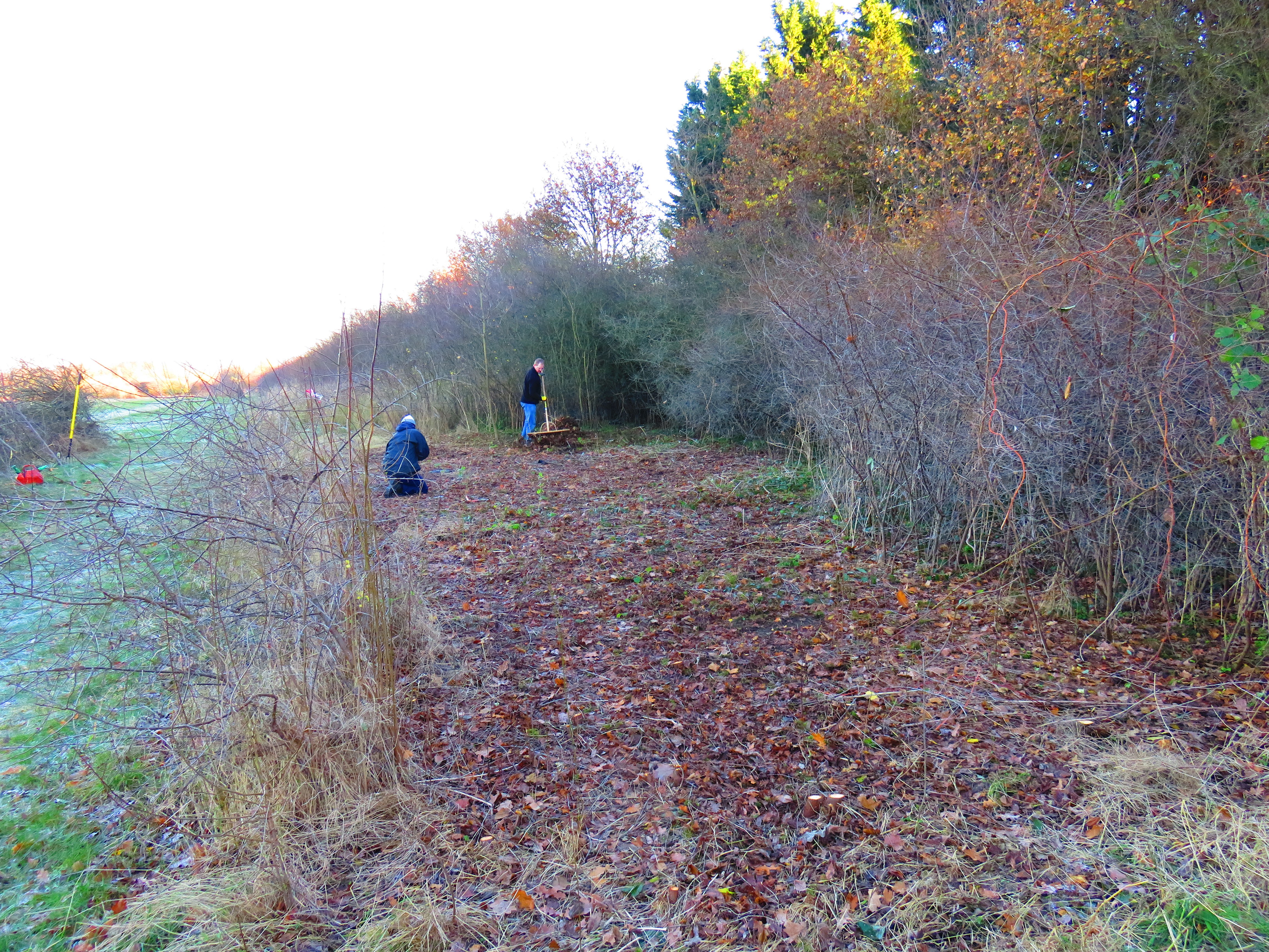 Large blackthorn scallop at Roundshaw, leaving younger plants standing where brown hairstreak eggs were found.
Large blackthorn scallop at Roundshaw, leaving younger plants standing where brown hairstreak eggs were found.
Recently, the Sutton Nature Conservation Volunteers and the LBS Biodiversity team journeyed out to the wilds of Roundshaw Downs with Butterfly Conservation, not just to scallop the blackthorn, but also to survey for Brown Hairstreak eggs.
For this species, the eggs are the most conspicuous and obvious evidence of a population to look for, as the adults spend most of their time high in woodland canopies, and the tiny larvae are small, green and feed on the underside of leaves. Searching for little white dots might not sound easy – and it isn’t – but the eggs are a lot easier to find than other forms!
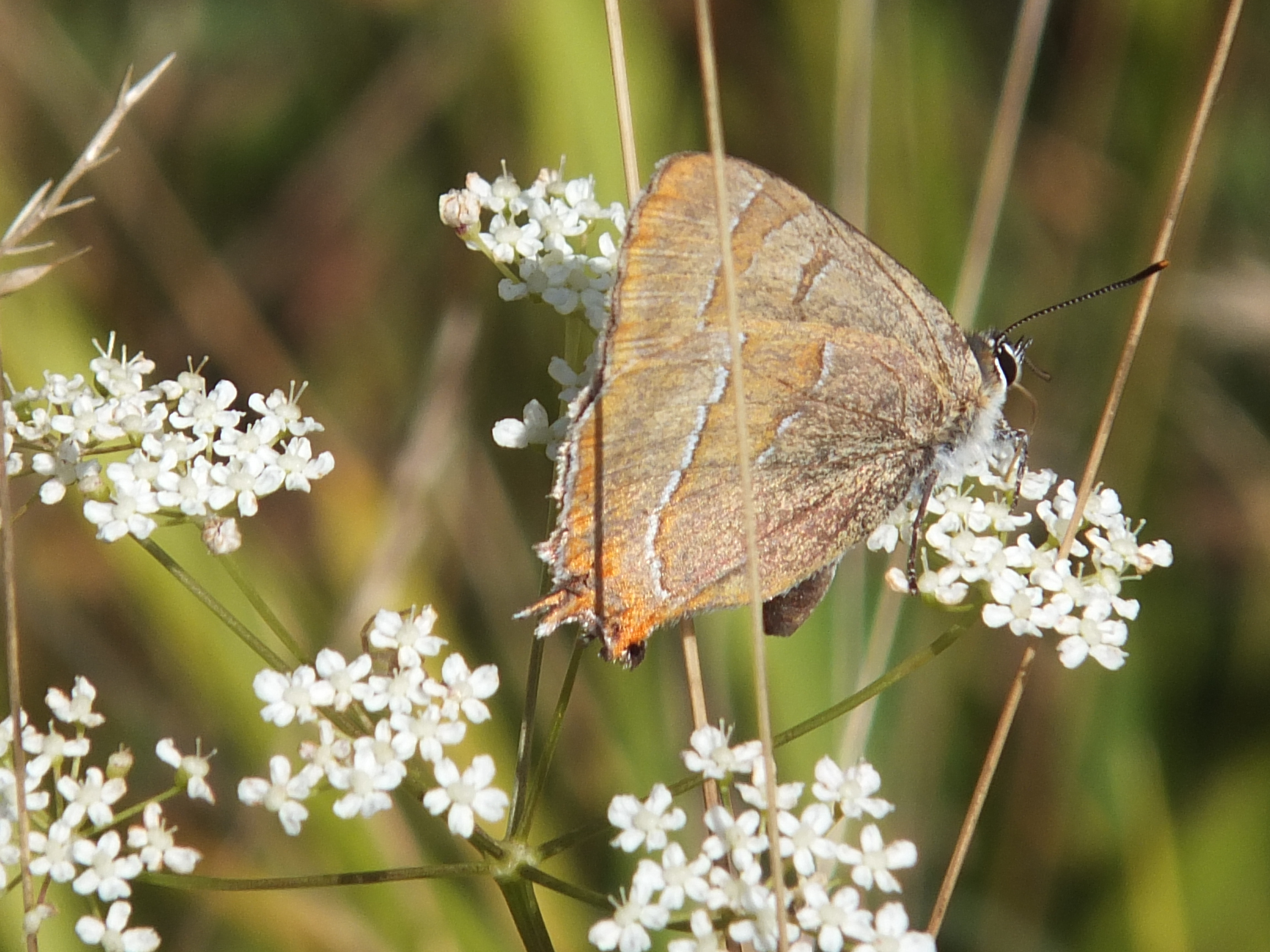
Adult Brown Hairstreak
With a large cohort of volunteers we carefully picked through the site’s various blackthorn thickets searching for the tiny white dots of the eggs. Despite the weather’s best attempts we all avoided frostbite, the occasional adrenaline burst that comes with finding an egg proved sufficient to warm us up. Although it must be said that when it’s that cold differentiating eggs from ice crystals can be difficult!
Our morning of searching along the north and south blackthorn hedge lines turned up 65 eggs, up from just 19 found in 2015. Of course, this may be due to a larger team (and there were a lot of us braving the cold!) searching the area more thoroughly, but it is undeniably encouraging to see such a stronghold of a relatively rare butterfly on one of our sites.
What’s more, the areas which had previously been scalloped, mainly on the southern edge of the site, turned up far more eggs than those areas which hadn’t been cut back, showing that our hard ongoing work has been worth it!
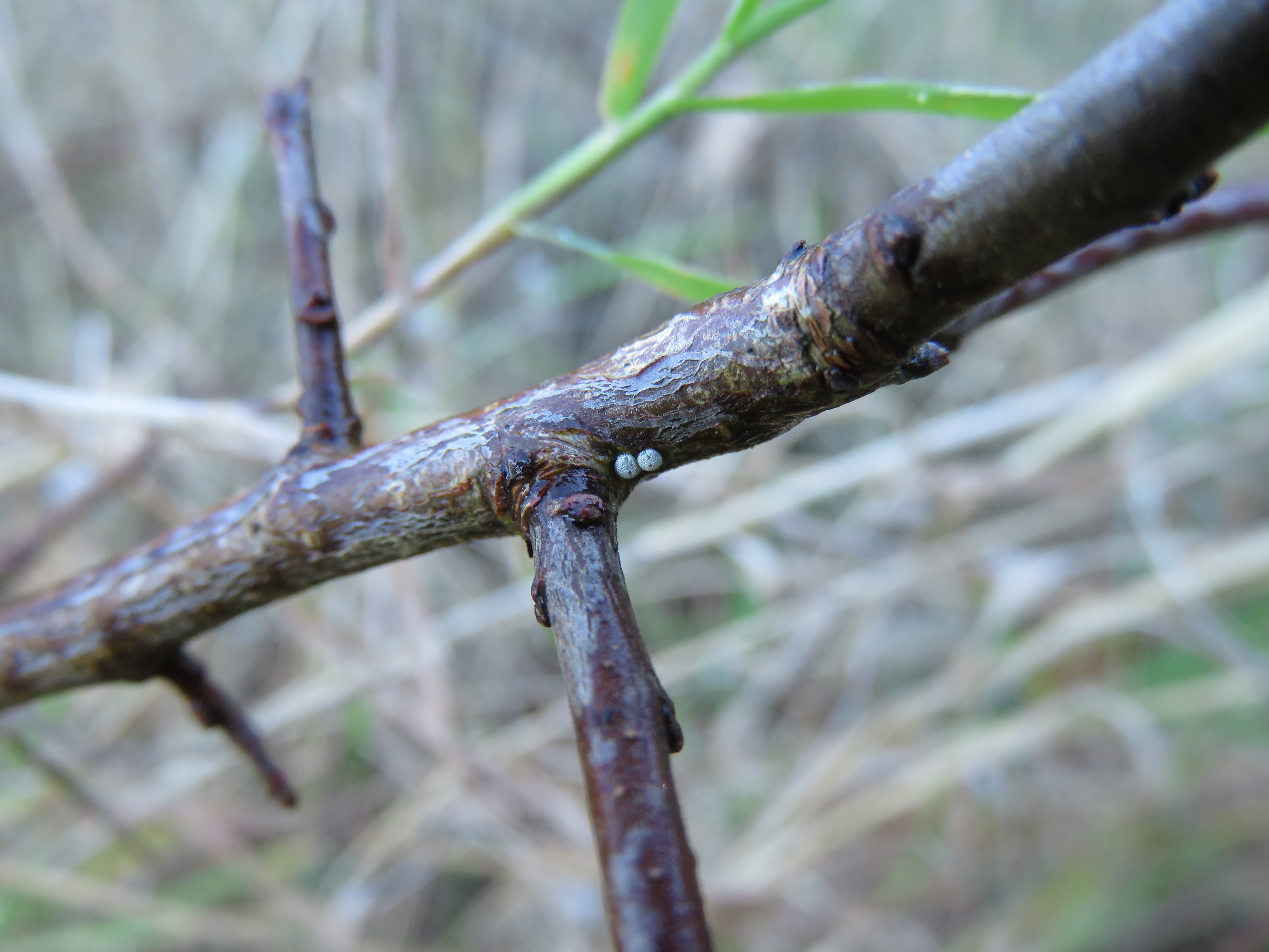 The ‘Sea anemone’or ‘golf ball’ shaped eggs of Brown Hairstreak (Thecla Betulae)
The ‘Sea anemone’or ‘golf ball’ shaped eggs of Brown Hairstreak (Thecla Betulae)
As a little bonus, on top of this we recorded 16 Blue Bordered Carpet Moth (Plemyria rubiginata) eggs. While this isn’t a particularly rare or unusual species it is the first confirmed record of it on the site, and 16 eggs found coincidentally could suggest a healthy local population of the moth.
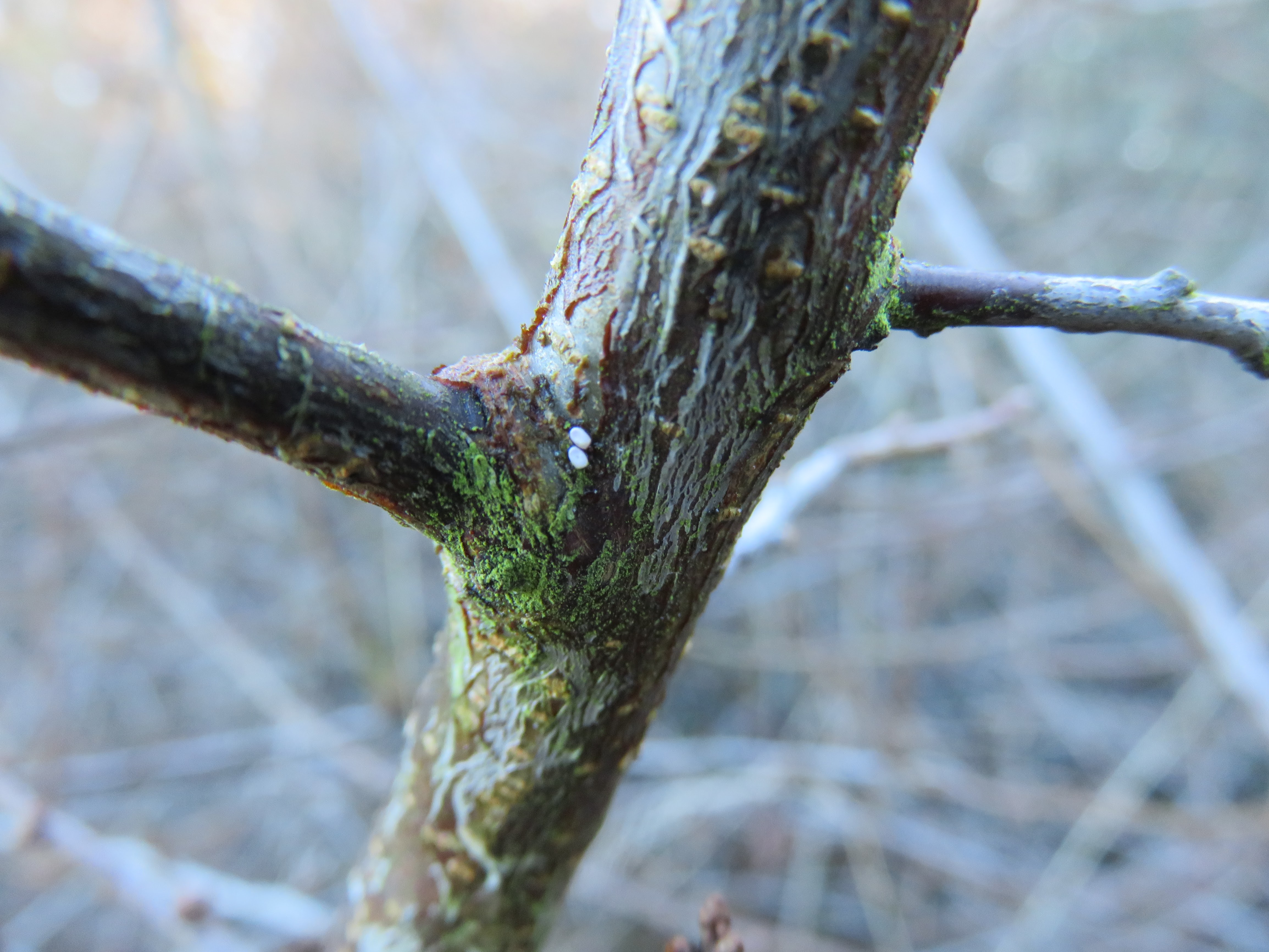
Ovoid eggs of the Blue Bordered Carpet Moth (Plemyria rubiginata)
But what is the ultimate point of collecting this data? Joe has explained before that the Brown Hairstreak is in decline, and at risk of regional extinction. Thus it had been included as a priority species for conservation in the UK Biodiversity Action Plan. This decline is thought to be mainly down to the destruction and improper management of blackthorn hedge lines where Brown Hairstreaks can lay their eggs. Therefore showing correlation between well managed blackthorn hedges like those at Roundshaw Downs and increases in Brown Hairstreak numbers is important in proving that point, and can be used to encourage more sensible management of blackthorn hedges.
Of course, showing that we have seen an increase in the species on a site is always a good thing, especially when the species concerned is a priority species. However it is important to remember that we are a small part of the bigger picture, and what we are really doing is contributing to a huge database of surveys and information collected about these species, which becomes more complete as time goes on and more surveys are undertaken. Using the data collected from this site, Butterfly Conservation can extrapolate certain information by comparing it to other sites on a local and national scale.
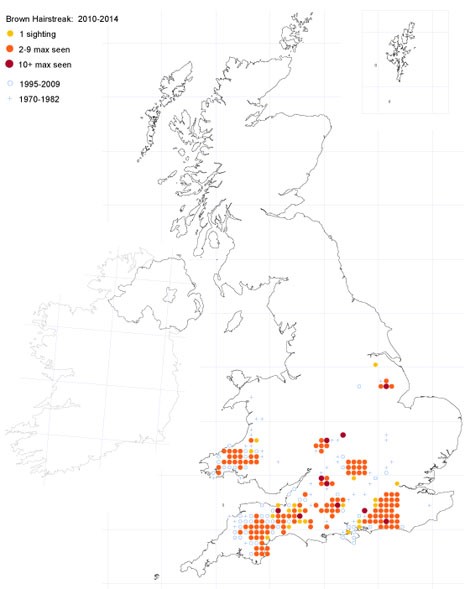
Population Map of Brown Hairstreak
Brown Hairstreak are generally confined to the South of the UK – with strongholds in Surrey and West Sussex, North Devon and South West Wales – however the data collected in Surrey by Butterfly Conservation since 2000 shows trends that the species is actually slowly moving North. Southerly sites in Surrey have seen a marked decline while at sites in the North and West of the county have seen an increase.
As mentioned previously, these assumptions may be slightly skewed. Have the sites with recorded increases of population (like Roundshaw Downs this year) really seen an increase, or is it that they have been more thoroughly surveyed? Had some of these sites not been previously surveyed at all? I mentioned above that we found the first recorded Blue Bordered Carpet Moth eggs at Roundshaw, but that absolutely doesn’t mean that there was no population there previously, just that they hadn’t been recorded.
The only way to verify these trends and gain real meaning from the data collected is through widespread and consistent surveying, both through organised survey days with large groups like our frosty morning with Butterfly Conservation, and through individual recording.
Both individuals and groups can submit sighting information to Butterfly Conservation via the iRecord Butterflies app, for any and all butterfly species. All information submitted this way will add to the overall database of knowledge, giving a clearer and more complete picture of butterfly populations.
While this blog has focused on Brown Hairstreak the message extends to all species: the more information we collect, the more useful it is.
So get recording – the future of the Brown Hairstreak may well depend on it!






